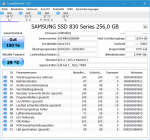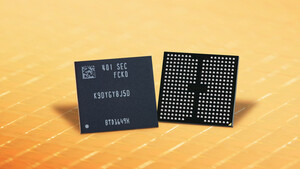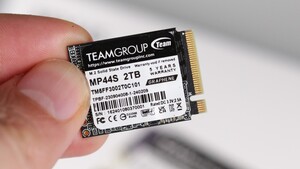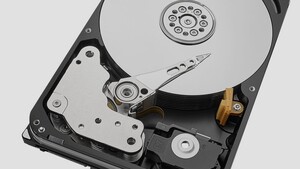Crash dumps are enabled on your computer.
On Fri 22.07.2016 11:20:01 GMT your computer crashed
crash dump file: C:\Windows\Minidump\072216-19656-01.dmp
This was probably caused by the following module: ntkrnlmp.exe (nt!KeBugCheckEx+0x0)
Bugcheck code: 0xEF (0xFFFFE001E4172780, 0x0, 0x0, 0x0)
Error: CRITICAL_PROCESS_DIED
Bug check description: This indicates that a critical system process died.
There is a possibility this problem was caused by a virus or other malware.
The crash took place in the Windows kernel. Possibly this problem is caused by another driver that cannot be identified at this time.
On Thu 21.07.2016 15:27:16 GMT your computer crashed
crash dump file: C:\Windows\Minidump\072116-19609-01.dmp
This was probably caused by the following module: dxgmms2.sys (dxgmms2!VIDMM_GLOBAL:

estroyOneAllocation+0x577)
Bugcheck code: 0x3B (0xC0000005, 0xFFFFF8013059E463, 0xFFFFD00026A93480, 0x0)
Error: SYSTEM_SERVICE_EXCEPTION
file path: C:\Windows\system32\drivers\dxgmms2.sys
product: Microsoft® Windows® Operating System
company: Microsoft Corporation
description: DirectX Graphics MMS
Bug check description: This indicates that an exception happened while executing a routine that transitions from non-privileged code to privileged code.
This appears to be a typical software driver bug and is not likely to be caused by a hardware problem.
The crash took place in a standard Microsoft module. Your system configuration may be incorrect. Possibly this problem is caused by another driver on your system that cannot be identified at this time.
On Thu 14.07.2016 13:38:12 GMT your computer crashed
crash dump file: C:\Windows\Minidump\071416-19984-01.dmp
This was probably caused by the following module: ntkrnlmp.exe (nt!KeBugCheckEx+0x0)
Bugcheck code: 0x1A (0x41201, 0xFFFFF6812EDB4348, 0xC43000011C862005, 0xFFFFE001F33148C0)
Error: MEMORY_MANAGEMENT
Bug check description: This indicates that a severe memory management error occurred.
This might be a case of memory corruption. More often memory corruption happens because of software errors in buggy drivers, not because of faulty RAM modules.
The crash took place in the Windows kernel. Possibly this problem is caused by another driver that cannot be identified at this time.
On Thu 14.07.2016 13:38:12 GMT your computer crashed
crash dump file: C:\Windows\memory.dmp
This was probably caused by the following module: ntkrnlmp.exe (nt!KeBugCheckEx+0x0)
Bugcheck code: 0x1A (0x41201, 0xFFFFF6812EDB4348, 0xC43000011C862005, 0xFFFFE001F33148C0)
Error: MEMORY_MANAGEMENT
Bug check description: This indicates that a severe memory management error occurred.
This might be a case of memory corruption. More often memory corruption happens because of software errors in buggy drivers, not because of faulty RAM modules.
The crash took place in the Windows kernel. Possibly this problem is caused by another driver that cannot be identified at this time.
On Wed 13.07.2016 21:44:46 GMT your computer crashed
crash dump file: C:\Windows\Minidump\071316-19531-01.dmp
This was probably caused by the following module: cdd.dll (cdd!CHwCommandBuffer::AddBitBltCommand+0x1D1)
Bugcheck code: 0x50 (0xFFFFF961F38355EE, 0x10, 0xFFFFF961F38355EE, 0x2)
Error: PAGE_FAULT_IN_NONPAGED_AREA
file path: C:\Windows\system32\cdd.dll
product: Microsoft® Windows® Operating System
company: Microsoft Corporation
description: Canonical Display Driver
Bug check description: This indicates that invalid system memory has been referenced.
This appears to be a typical software driver bug and is not likely to be caused by a hardware problem.
The crash took place in a standard Microsoft module. Your system configuration may be incorrect. Possibly this problem is caused by another driver on your system that cannot be identified at this time.
On Wed 13.07.2016 12:58:47 GMT your computer crashed
crash dump file: C:\Windows\Minidump\071316-19765-01.dmp
This was probably caused by the following module: eamonm.sys (eamonm+0x1E69D)
Bugcheck code: 0x1E (0xFFFFFFFFC0000005, 0xFFFFF801AABA54EF, 0x0, 0x170010)
Error: KMODE_EXCEPTION_NOT_HANDLED
file path: C:\Windows\system32\drivers\eamonm.sys
product: ESET Security
company: ESET
description: Amon monitor
Bug check description: This indicates that a kernel-mode program generated an exception which the error handler did not catch.
This appears to be a typical software driver bug and is not likely to be caused by a hardware problem.
A third party driver was identified as the probable root cause of this system error. It is suggested you look for an update for the following driver: eamonm.sys (Amon monitor, ESET).
Google query: ESET KMODE_EXCEPTION_NOT_HANDLED
On Mon 11.07.2016 15:04:05 GMT your computer crashed
crash dump file: C:\Windows\Minidump\071116-19156-01.dmp
This was probably caused by the following module: ntkrnlmp.exe (nt!KeBugCheckEx+0x0)
Bugcheck code: 0x1A (0x61941, 0xEAB72FF928, 0xD, 0xFFFFD00022448B00)
Error: MEMORY_MANAGEMENT
Bug check description: This indicates that a severe memory management error occurred.
This might be a case of memory corruption. More often memory corruption happens because of software errors in buggy drivers, not because of faulty RAM modules.
The crash took place in the Windows kernel. Possibly this problem is caused by another driver that cannot be identified at this time.
On Wed 06.07.2016 11:29:07 GMT your computer crashed
crash dump file: C:\Windows\Minidump\070616-29515-01.dmp
This was probably caused by the following module: nvlddmkm.sys (nvlddmkm+0xBA8E70)
Bugcheck code: 0x50 (0xFFFFE001F18B7B49, 0x2, 0xFFFFF801F5708E70, 0x2)
Error: PAGE_FAULT_IN_NONPAGED_AREA
file path: C:\Windows\system32\drivers\nvlddmkm.sys
product: NVIDIA Windows Kernel Mode Driver, Version 368.81
company: NVIDIA Corporation
description: NVIDIA Windows Kernel Mode Driver, Version 368.81
Bug check description: This indicates that invalid system memory has been referenced.
This appears to be a typical software driver bug and is not likely to be caused by a hardware problem.
A third party driver was identified as the probable root cause of this system error. It is suggested you look for an update for the following driver: nvlddmkm.sys (NVIDIA Windows Kernel Mode Driver, Version 368.81 , NVIDIA Corporation).
Google query: NVIDIA Corporation PAGE_FAULT_IN_NONPAGED_AREA




